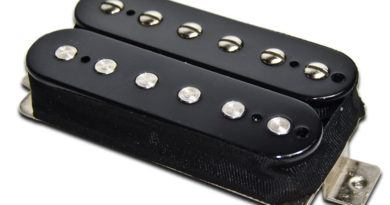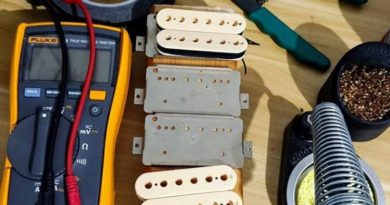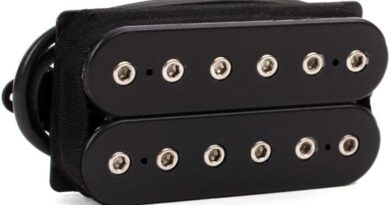Seymour Duncan Hot Rails for Strat Set
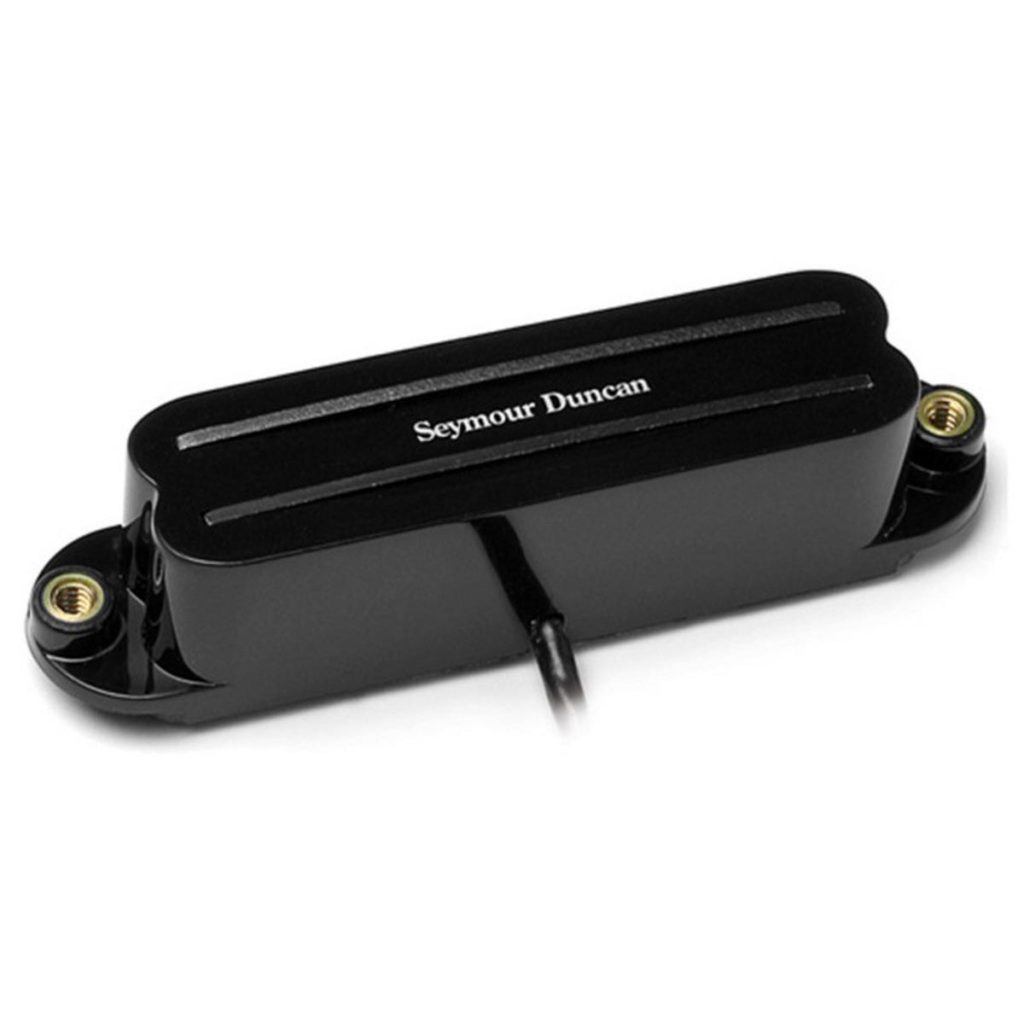
Who else remembers the old advertisement for the Hot Rails? With the tag line “When Strats Scream.”? If you made your bones in the 80s, this was the answer to what you’d been looking for!
The Hot Rails fits the need for something to fit in a slot meant for a single coil. By the mid-80s, the super-strat design was all the rage. Hot-rod guitars were in full swing and players needed the power of a humbucker without carving up their cherished instruments.
The powerful high-octane, high-energy music of the day frequently demanded a little more fuel than Ye Olde Single Coil pickup. LOL! While I was primarily a 1 and 2 humbucker guy myself, the hum-single and the hum-single-single styles did find their way in my arsenal. HaHa! And sometimes, you just want to have a Strat in the stable as well.
Some at the Duncan Company have said the Hot Rails were an alternative to the Invader humbucker. I’m glad I didn’t hear that back in the day, or I probably would have never tried the Hot Rails. LOL! It might be a good thing that’s not quite the case. Even without using your ears, you can read on the specs for the Hot Rails and the Invader that the resonant peaks aren’t the same. Well then, what do they sound like?
Being an old codger, I have samples from over the span of many years. Why is that relevant? Good question. The Duncan Company changed the design in the mid 00s. The older version had a more traditional flange on the flatwork and the ceramic magnet was visible on the bottom. The newer style is flat/straight on both sides and you will see a PCB on the bottom. And generally speaking, the new style is taller.
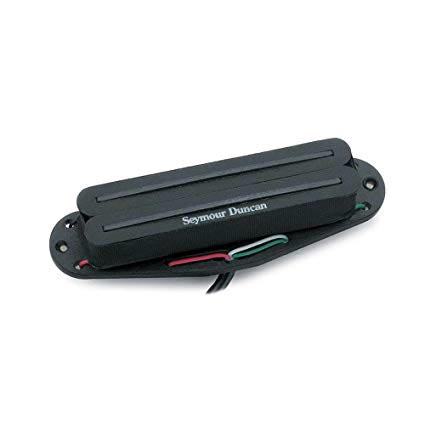
Oh, cool! The straight sides makes it a snap to fit in the smaller routes commonly found on Charvel and Jackson guitars? Er… nope. Be prepared for a little surgery if you thinking about that. The girth of the new style can also demand a smidge of patience when installing in some regular single coil slots in a pickguard. Maybe have a shoehorn on standby. HaHa!
The Hot Rails comes with 4-con lead wire, so you can still have a little variety to go with your spice of life. There is actually a fun wiring option that only requires adding a push-pull pot to your guitar that makes the down position all-series and the up position all-split.
For something aggressive as the Hot Rails appears, it’s actually on the more versatile side. Sure, it has some low end punch and a dominant midrange. The high end has a little more going on than you’d think from the specs. At least in the bridge. The highs in the neck position are a little thicker by comparison.
Speaking of the neck position Hot Rail, it’s going to be a go-to for the more fluid lead work. This one has been a staple in my h-s-s neck slot for a long time. If your switching options allow, it’s also a workable consideration when in split or in parallel for clean amp settings. In that wiring option, it might be a little more crisp than the more organic-sounding Alnico pickups out there. But it’s great for the renowned LA studio clean tone of the 80s.
Although it took me a while to get around to throwing the bridge position Hot Rail into the mix, it was worth the wait. While it does pack a hearty punch, it’s livelier than some might expect. In fact, I’m also digging the bridge position Hot Rail in the middle slot.
Let’s listen to some Hot Rails in action:
If you caught that I have some old versions mixed with some new, maybe you’re wondering if they pair up well. Sure they do. There is a slight shift in Inductance, Resistance, and the Resonant Peak in the relative models. Nothing that makes causes any significant issues in application. But I will clarify that my neck position is the old style and my bridge position is the new style
Hot Rails Bridge (actual)
Resistance – 16.507 K
Inductance – 13.289 H
Split South – 8.269 K
Split North – 8.258 K
Parallel – 4.129
Magnet – Ceramic
Hot Rails Bridge (advertised)
Resistance – 16.96 K
Inductance – 13.429 H
Resonant Peak – 2.93 KHz
Hot Rails Neck (actual)
Resistance – 11.167
Inductance – 7.333 H
Split South – 5.534 K
Split North – 5.65 K
Parallel – 2.796
Magnet – Ceramic
Hot Rails Bridge (advertised)
Resistance – 10.38 K
Inductance – 7.977 H
Resonant Peak – 3.87 KHz
Outside of that, the only real options are the colors of black , cream, parchment, and white. And these colors are one you’ll be living with. The Hot Rails is an enclosed pickup that does have an option for swappable covers.
For reference, this Seymour Duncan Hot Rails for Strat humbucker pickup set evaluation was conducted with a Fractal Axe-Fx II XL+ featuring Celestion Impluse Responses and Fractal MFC-101 MIDI Foot Controller. Real cabs used were Marshall 1960B cabs loaded with Celestion Vintage 30s and G12M Greenbacks.
Seymour Duncan Website | Facebook | Twitter | YouTube | Instagram


